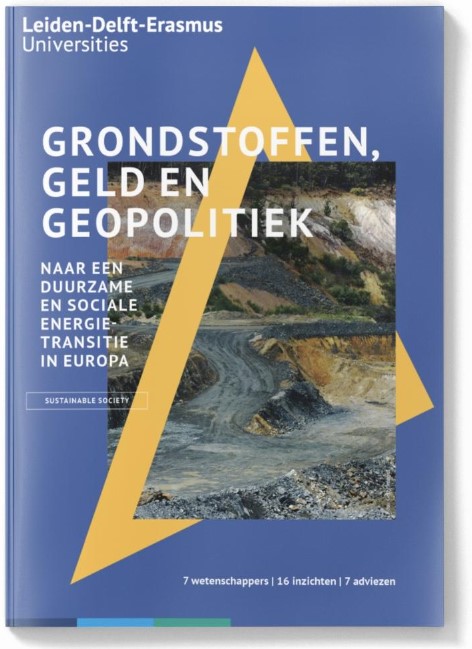
Together towards a Circular System: Leiden contributes to Growing with Green Steel
A complete transformation of the steel cycle in the Netherlands with the ultimate goal of a CO2 neutral steel sector by 2050. For this purpose, the Growing with Green Steel program receives €100 million from the National Growth Fund. From Leiden, Professor of Industrial Ecology René Kleijn is involved.
The Growing with Green Steel consortium is granted the subsidy in the coming eight years to develop technologies based on hydrogen, renewable energy, and circular iron and steel processing. Within the project, René Kleijn will appoint two PhD candidates and a postdoctoral researcher for research collaboration with the universities in Delft and Utrecht.
Maximising environmental gains of a green steel industry
Kleijn: ‘We are identifying the key levers to maximise the environmental gains of a greener steel industry.’ He aims to assist technology developers in designing their processes and products. ‘We want to avoid solving old problems only to create new ones. This includes addressing issues like the release of hazardous substances during recycling.’
Mapping the material life cycles
It's crucial that the proverbial mammoth tanker gets on the right course from the start, Kleijn thinks. He wants to ensure that the large-scale transition of the steel industry happens in a meaningful direction. To achieve this, the Leiden team precisely maps out which material flows are associated with current and new methods of steel production. They create a comprehensive model of the entire life cycle, from production to recovery, including electric melting technologies, hydrogen use, and maximising scrap recycling. ‘We aim to quantify circularity and environmental gains as accurately as possible.’
Global contribution to a sustainable, circular, and fair economy
In this way, the researchers assist the consortium in effectively reducing CO2 emissions from steel production drastically and minimising waste production. Kleijn strongly believes in the approach of Growth Fund projects. ‘With projects like these, we can develop new, sustainable technology in the Netherlands that strengthens and sustains our own economy. Subsequently, other countries can adopt this technology, thus contributing globally to the transition to a sustainable, circular, and fair economy.’
‘Of course, I would love to have a magic wand, but changes take time.’
The road is long; there is so much to be done. However, Kleijn is undeterred. ‘Of course, I would rather have a magic wand, but our economy is very large and very complex, so changes take time. The sooner we start, the faster these transitions will be completed.’

Resources, money, and geopolitics
René Kleijn views the transition to a sustainable energy system and economy from an interesting "materialistic" perspective. ‘It's also a materials transition. We are shifting from the use of a continuous stream of fossil fuels to metals used in making solar cells, wind turbines, electric cars, and the electricity grid. We currently require a vast amount of these metals in the construction phase of this new system. They risk becoming scarce, and we are overly dependent on, for example, China. This has various geopolitical implications.’
The solution: reuse. Kleijn: ‘If we design the system in a circular way, the demand could drastically decrease in the long term.’ However, much is still needed. ‘Circularity is much more than recycling; it involves reducing usage, replacing scarce materials with less scarce alternatives, designing products to be repairable and demountable, promoting reuse, and so on.’
Read more about this in the English versions of all articles from the booklet Grondstoffen, geld en geopolitiek, about a sustainable and social energy transition in Europe.
Text: Rianne Lindhout
